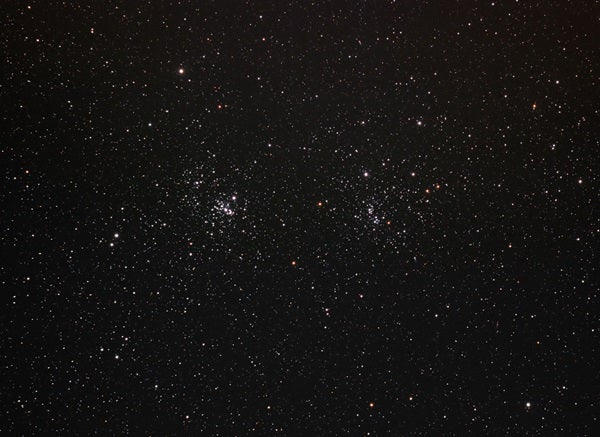
The Double Cluster (NGC 869, right, and NGC 884) in Perseus is one of the heaven’s most beautiful deep-sky objects. Each member spans slightly less than 1/2° and contains more than 100 stars.
Richard Jacobs
Gaze northeastward an hour or two after sunset on a late autumn evening from a dark site and you’ll likely notice an elongated smudge of light midway between Cassiopeia and the “head” of Perseus. More than 2 millennia ago, it caught the eye of the Greek astronomer Hipparchus, who referred to it as a “cloudy spot.” Thanks to the telescope, we now know that this smudge of light is in fact a dazzling pair of starry aggregations we call the Perseus Double Cluster.









